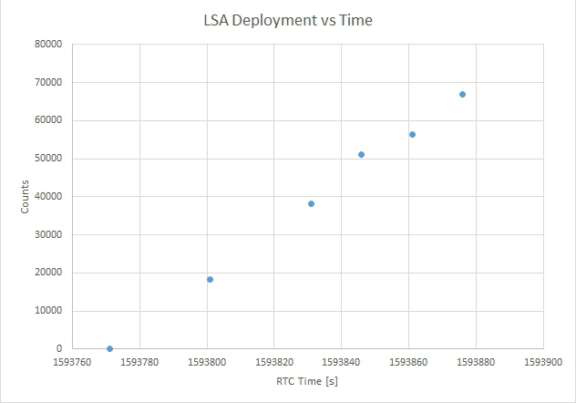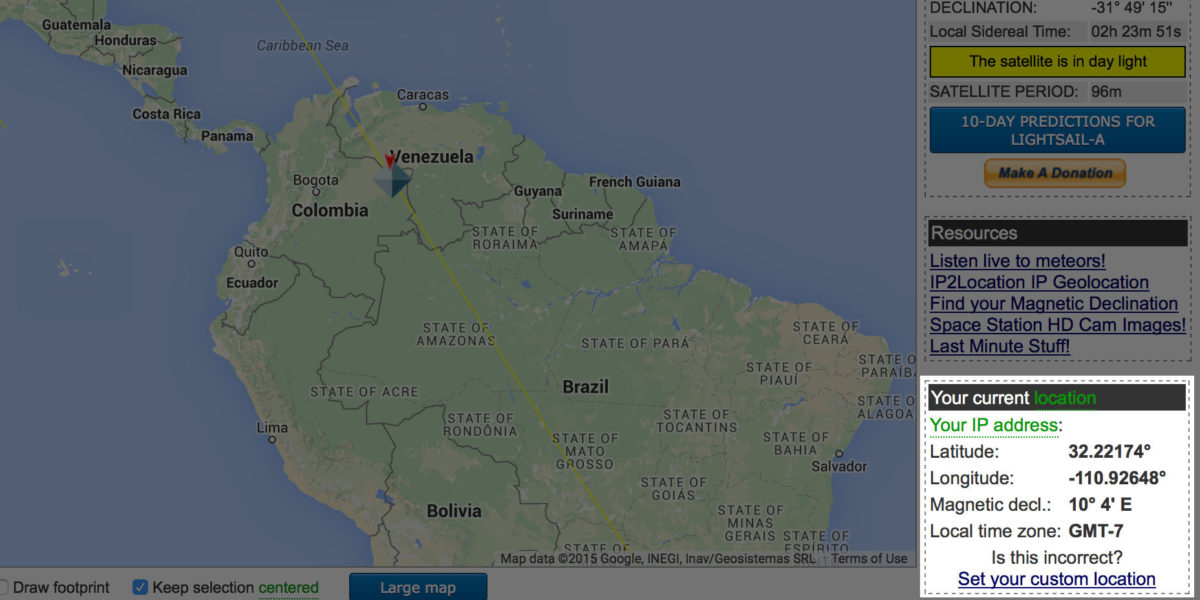Jason Davis • Jun 07, 2015
Deployment! LightSail Boom Motor Whirrs to Life
LightSail's tiny solar sail deployment motor sprung to life Sunday afternoon, marking an important milestone for The Planetary Society’s nail-biting test mission. Sail deployment began at 3:47 p.m. EDT (19:47 UTC) off the coast of Baja California, Mexico, as the spacecraft traveled northwest to southeast.
Telemetry received on the ground showed motor counts climbing to the halfway point before LightSail traveled out of range. Power levels were consistent with ground-based deployment tests, and the spacecraft’s cameras were on. "All indications are that the solar sail deployment was proceeding nominally," wrote mission manager David Spencer in an email update.

LightSail is currently out of range until 2:26 a.m. EDT Monday. Ground control teams at Cal Poly San Luis Obispo and Georgia Tech will begin transferring the spacecraft’s images from its cameras to flight system. A full-resolution image will be downloaded shortly thereafter.
In the meantime, radio operators around the world are encouraged to listen for LightSail and submit data (details can be found at the bottom of our Mission Control page), which could be invaluable in helping determine the spacecraft’s status before tomorrow morning's overflights. Two ground-based observatories will also be attempting to image the spacecraft, and amateur astronomers are encouraged to participate. The spacecraft’s current estimated position, along with details for radio trackers, can be found on our mission control page. All photographs and radio data can be submitted to [email protected].
LightSail Viewing Tips
Interested in catching a glimpse of LightSail as it soars across the sky? Here are a few viewing tips:
Our Mission Control Center predicts the next time LightSail will fly over your current location. Predictions are based on your device’s current location. If you’d like to specify a different spot, head over to N2YO.com and click “Set your custom location.” You’ll need to create a free account.
The start and end horizons are the locations LightSail should appear and disappear. Max elevation indicates how high it will get in the sky. Zero degrees is the horizon (assuming no obstructions), and 90 degrees is directly overhead.
Look for flyovers that occur around dawn and dusk. The best time to see any spacecraft—including LightSail—is when you are standing in Earth’s shadow but the spacecraft is still illuminated by sunlight.
LightSail may be running ahead of schedule. Depending on how long it’s been since we’ve received an orbital update from the Joint Space Operations Center, our pass predictions may be inaccurate. If you're going outside to look, consider starting a few minutes earlier than our listed times.
Let’s Go Beyond The Horizon
Every success in space exploration is the result of the community of space enthusiasts, like you, who believe it is important. You can help usher in the next great era of space exploration with your gift today.
Donate Today

 Explore Worlds
Explore Worlds Find Life
Find Life Defend Earth
Defend Earth


